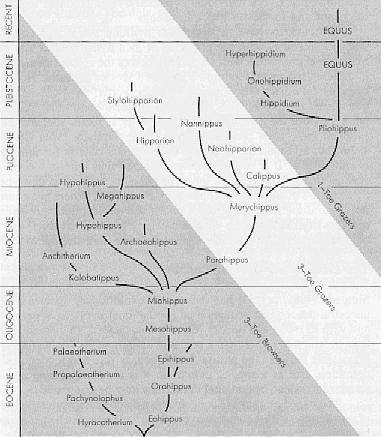
Ecological context of Equid evolution

Ecological context of Equid evolution
Hyracotherium & Eohippus evolved in North America as 3- or 4-toed browers. The evolution of 3-toed grazers coincides with the evolution of large open grasslands in the North American plains during the Miocene.The adaptive radiation of Merychippus reflects the availability of this extensive food source. Efficient exploitation of this resource requires capacity for rapid, wide-ranging movement, as seen in the further evolution of Pliohippus and ultimately Equus as single-toed grazers.
Contrast the diagram with that showing the biogeographic evolution of Equiade. Note that this diagram employs a typical convention, that evolution proceeds "upwards & to the right."